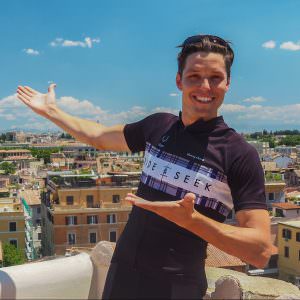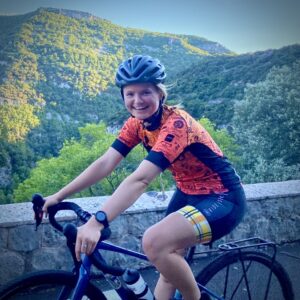Cycling Colombia Overview
Ride the Heart of Colombia – From the Andes to the Caribbean
Join us on our inaugural cycling adventure through Colombia, a country that pulses with life, colour, and rhythm at every turn. From the high-energy streets of Bogotá to the colonial elegance of Cartagena, this journey reveals the full sweep of Colombia’s cultural and geographical diversity — soaring mountains, lush coffee plantations, and sun-drenched Caribbean coastlines. Along the way, you’ll meet warm, welcoming locals, savour traditional dishes, and experience the country’s infectious passion for cycling.
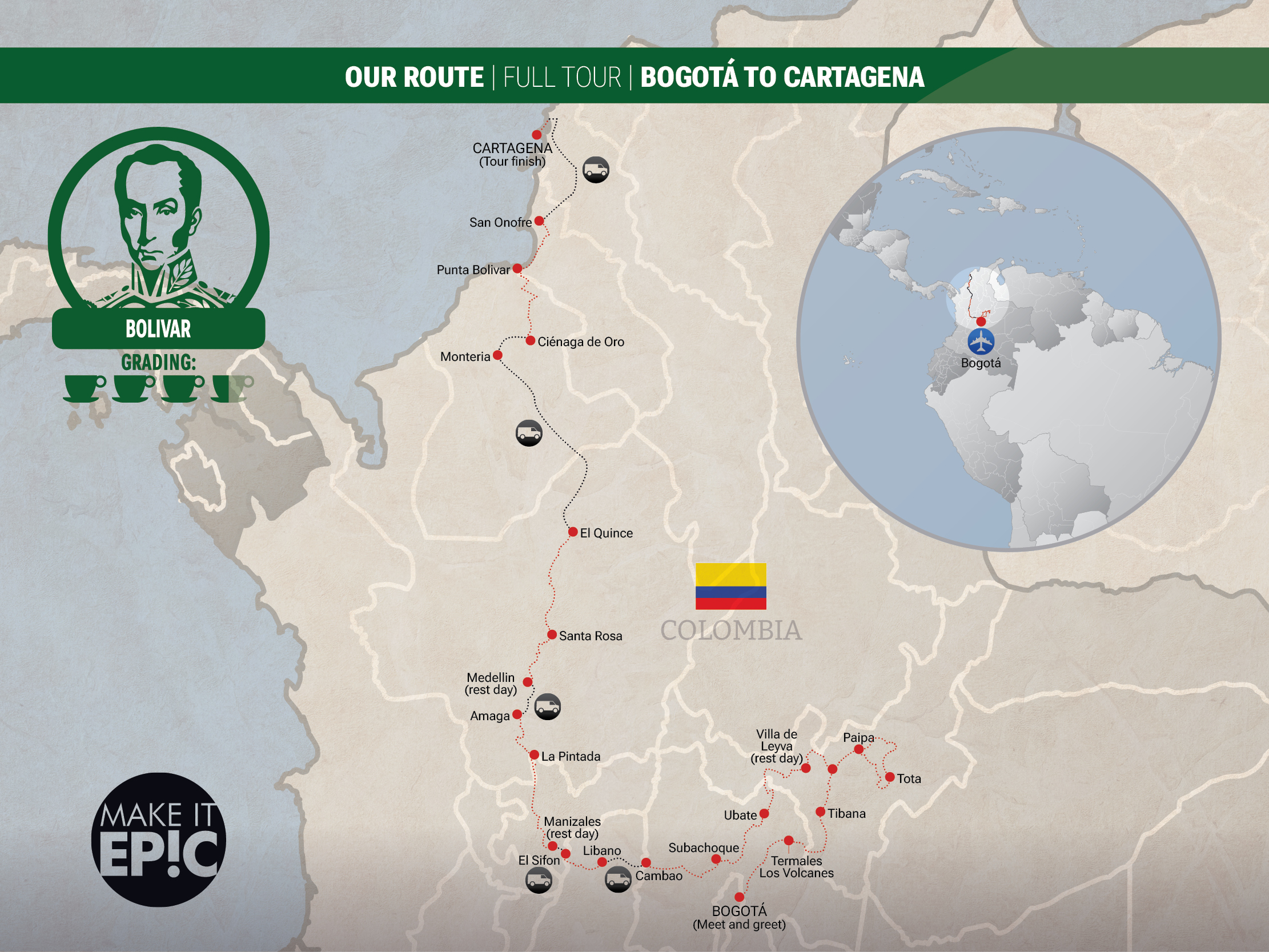
Cycling is one of Colombia’s national sports, and that enthusiasm translates to the road. Drivers are accustomed to sharing the road with riders, and cycling is an integral part of everyday life. With good road conditions and a strong local cycling culture, Colombia provides a safe and welcoming environment for exploring on two wheels.

Our tour is designed for riders who seek both adventure and discovery. Journey through Colombia’s rolling Andean landscapes and uncover a country rich in spirit and story — from the vibrant energy of Bogotá and Medellín to the cobblestoned charm of Villa de Leyva and the aromatic allure of the Coffee Triangle. Every stop reveals a different side of Colombia’s captivating soul.
There are certainly plenty of hills in Colombia, but we’ve carefully designed a route that strikes the perfect balance — with extra riding options for those seeking more challenge, while keeping the core itinerary accessible within our three and half-espresso-cup grading. It’s a ride that rewards both the strong and the steady, blending scenic climbs with cultural immersion at every turn.

Woven through this journey is the story of Simón Bolívar, “El Libertador,” whose vision of freedom and unity still shapes Colombia’s identity today. Cycling through this stunning landscape, you’ll feel that same spirit of independence and pride that defines the nation. With its strong cycling heritage, world-class athletes, and ever-growing reputation as a safe and welcoming destination, Colombia is the perfect setting for our next great adventure on two wheels.
Developed in collaboration between our General Manager, Ben Weigl, and our local partner, Tomás, this tour combines Ride & Seek’s Epic Bike Tour methodology with the authentic local knowledge and passion that make Colombia such an exceptional destination. The result is a wonderful first South American adventure — a journey that celebrates stunning landscapes, warm hospitality, and the joy of exploring one of the world’s most inspiring cycling nations.
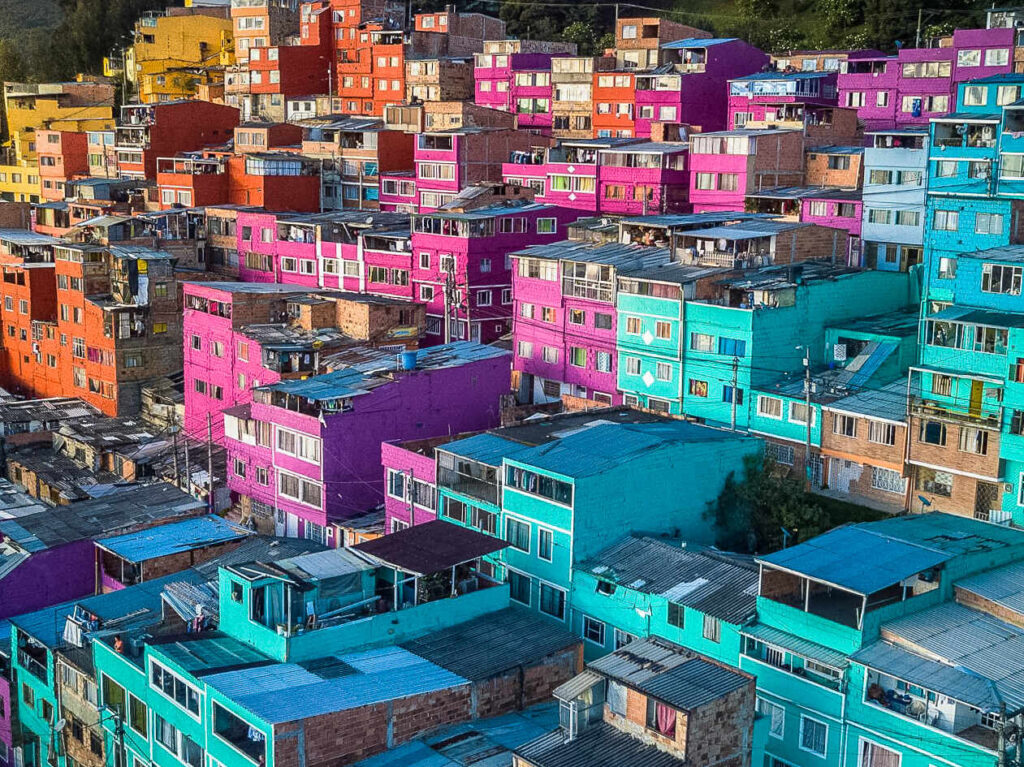
Cycling Colombia Highlights
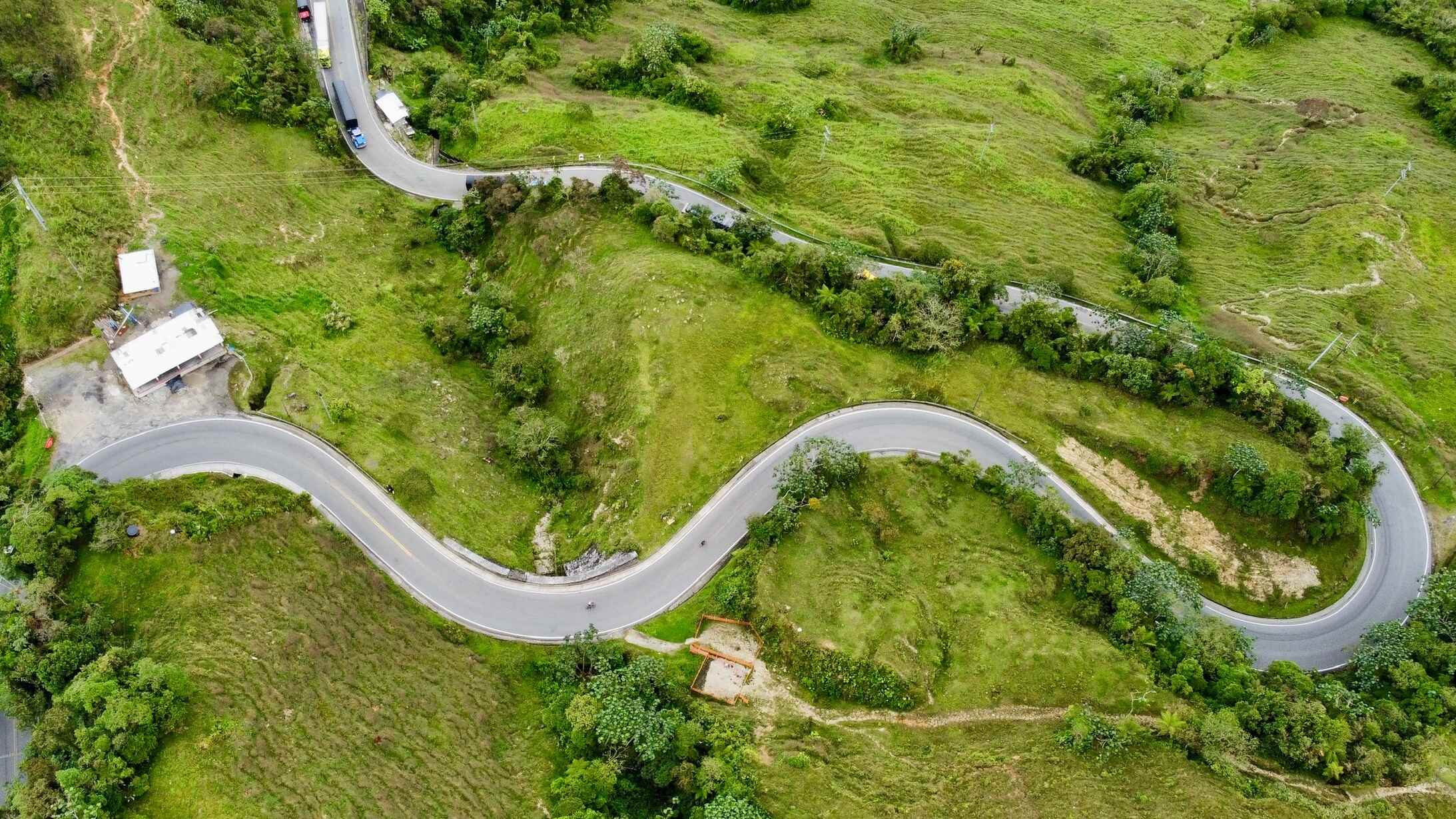
• The Andes Mountains: Colombia’s stunning Andean region provides a plethora of challenging climbs and rewarding descents, offering some of the most scenic cycling routes in the world.
• The Ciclovía: Bogotá has embraced cycling culture and hosts a weekly Ciclovía, where major roads are closed for cyclists and pedestrians. This will be our warm-up ride!
• Climb to El Sifon – the new world’s longest climb, ascending to 4149 metres / 13,612 feet!
• Discover the Zona Cafetera: Colombia’s coffee region and a UNESCO World Heritage site
• Discover Medellin: A city with a captivating charm, from its lush landscapes to dynamic urban culture, warm people, exciting nightlife, and a remarkable transformation.
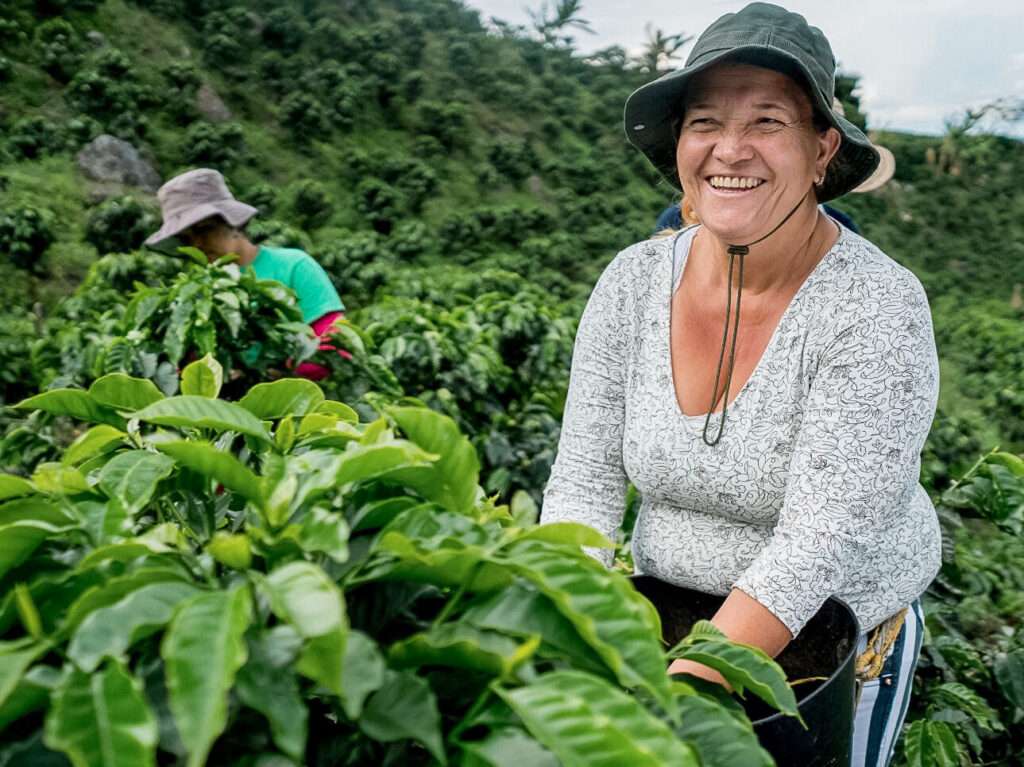
• Local Hospitality: Colombian culture is famously warm and welcoming. Did we mention that cycling is also hugely popular too?
• Stay in restored haciendas (Spanish-style farming estate) offering warm hospitality and authentic Colombian meals.
• Explore Cartagena, the tour’s finish: It’s enchanting old town, vibrant streets, historic fortifications, beautiful beaches, and delightful Caribbean cuisine for an unforgettable adventure
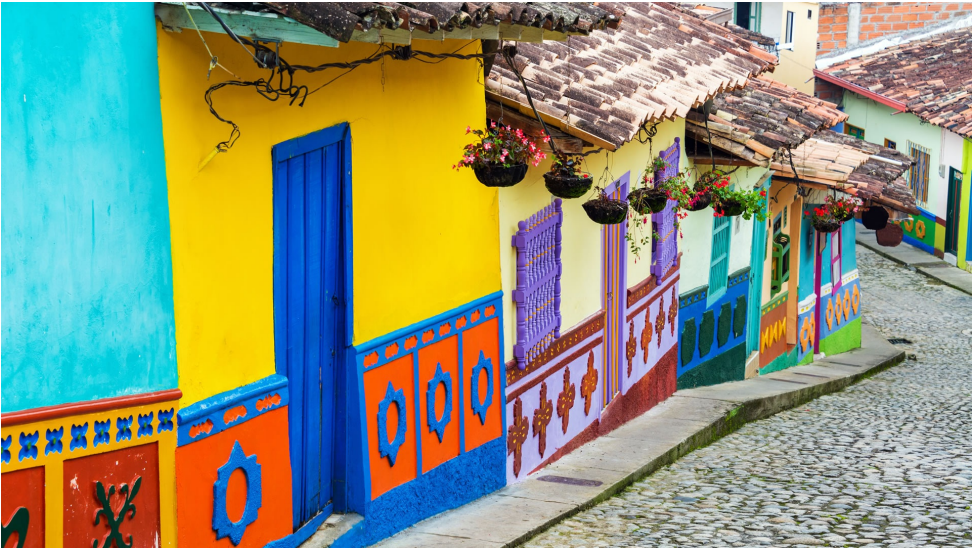
Cycling Colombia Dates & Prices
| Stage | Start Date | End Date | Days | Cost (USD) |
|---|---|---|---|---|
| Bogota to Cartagena | Nov 7th 2026 | Nov 28th 2026 | 22 Days / 21 Nights | US$11,880 |
| Stage 1 – Lakes, Legends & the High Andes | Nov 7th 2026 | Nov 20th 2026 | 14 Days / 13 Nights | US$7,560 |
| Stage 2 – Coffee Summits to Caribbean Shores | Nov 19th 2026 | Nov 28th 2026 | 10 Days / 9 Nights | US$5,400 |
Custom Tours
All our tours — and individual stages — are available as custom itineraries for private groups.
Contact us to tailor a journey perfectly suited to your riding style and interests.
What’s Included
-
Accommodation in carefully selected hotels (bed & breakfast)
-
Snacks en route and pre/post-ride nutrition
-
Selected lunches
-
Multi-course group dinners showcasing local cuisine
(We include occasional independent dinners to give you flexibility.) -
A Ride & Seek jersey
-
Garmin 1030 with all routes preloaded
-
Ride & Seek water bottle
-
Weekly kit laundry service
-
Passionate, experienced, and knowledgeable guides always on hand
Not Included
-
Alcoholic beverages
-
Bike hire
-
Occasional lunches
-
Pre- and post-tour accommodation
Supplements
-
Single Supplement: Prices are based on twin/double occupancy.
If you prefer your own room, a supplement of US$90 per night applies.
Deposit
To secure your place on this tour or a stage, a US$500 deposit (or local currency equivalent) is required.
We accept payment in USD, GBP, AUD, and EUR.
Your final invoice will include any applicable single supplements and bike hire costs.
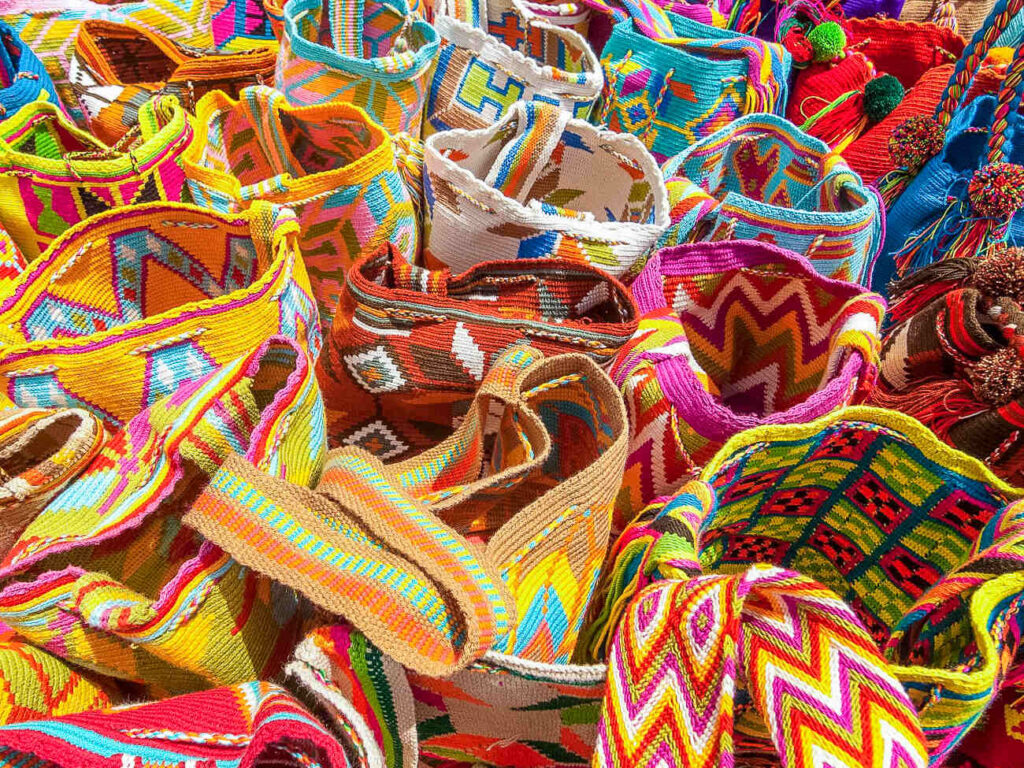
Cycling Colombia Cuisine
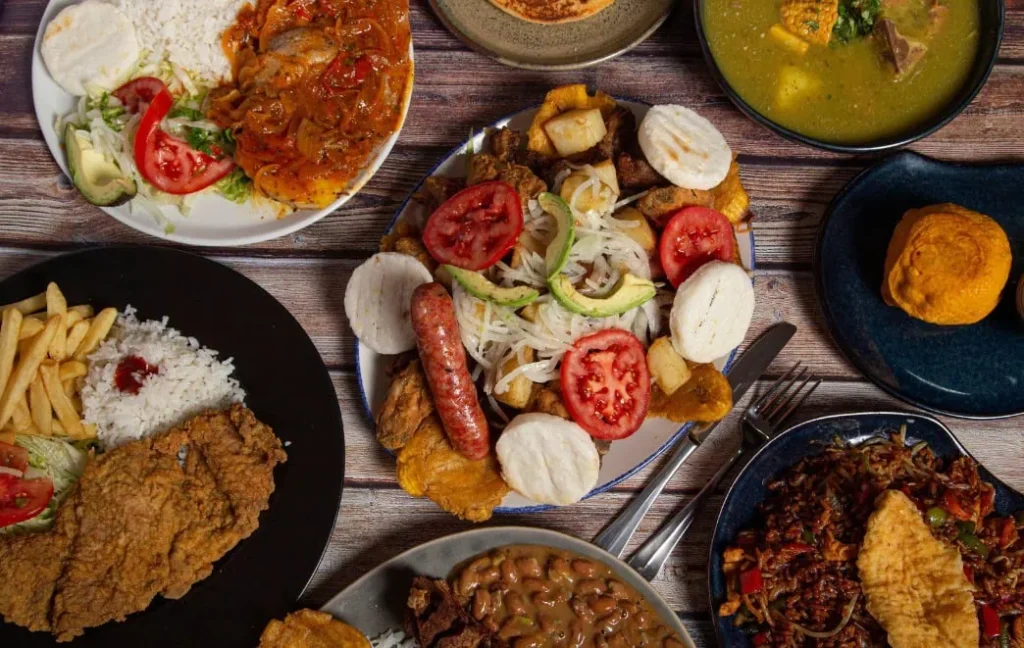
The flavours of Colombia are as rich and varied as its landscapes, making food an unforgettable part of the cycling journey. From the moment you arrive in Bogotá, the energy of its food scene sets the tone — street vendors serving arepas hot off the griddle, vibrant markets filled with exotic fruits, and hearty mountain dishes that fuel you for the climbs ahead. As we ride through the Andes, we’ll taste the rhythm of regional cooking: slow-cooked stews like ajiaco and sancocho, fresh trout from highland rivers, and the sweetness of just-picked tropical fruit served roadside by smiling locals.
As the route winds into the Coffee Triangle, the heart of Colombia’s culinary soul reveals itself. Here, you’ll pedal past rolling hills blanketed with emerald-green coffee plants, and visit family-run fincas where the scent of freshly roasted beans fills the air. It’s not just about drinking coffee — it’s about understanding it: the art of cultivation, the ritual of preparation, and the pride that defines Colombia’s coffee heritage. Between rides, we’ll savour a perfectly brewed cup overlooking misty valleys, knowing that every sip carries the spirit of the land and its people.
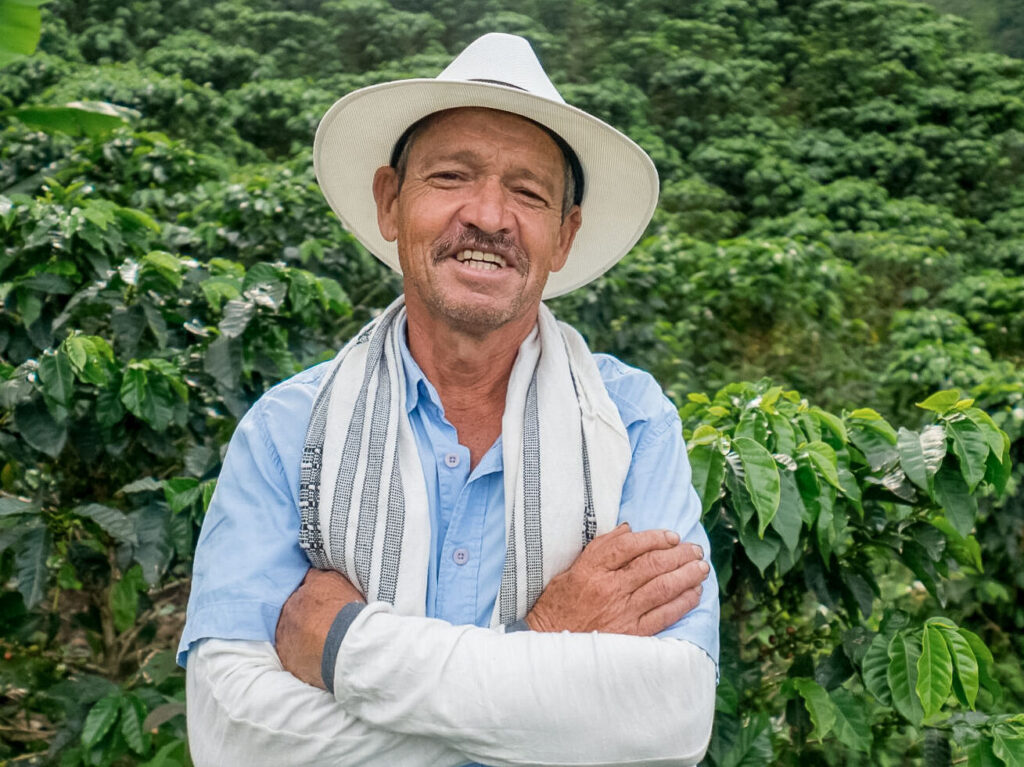
And then, as the journey descends toward the Caribbean coast, the cuisine takes on a sun-drenched vibrancy. Think ceviche marinated in lime, fried plantains, and fresh seafood caught just hours before it reaches your plate. In Cartagena, evenings unfold with laughter, music, and a glass of crisp local wine or rum in hand — the perfect celebration of a ride well done. Just like the cycling itself, Colombia’s food, wine, and coffee are an immersion in sensory delight — bold, generous, and full of life. Each meal along the way tells the story of a nation whose warmth and flavour stay with you long after the wheels stop turning.

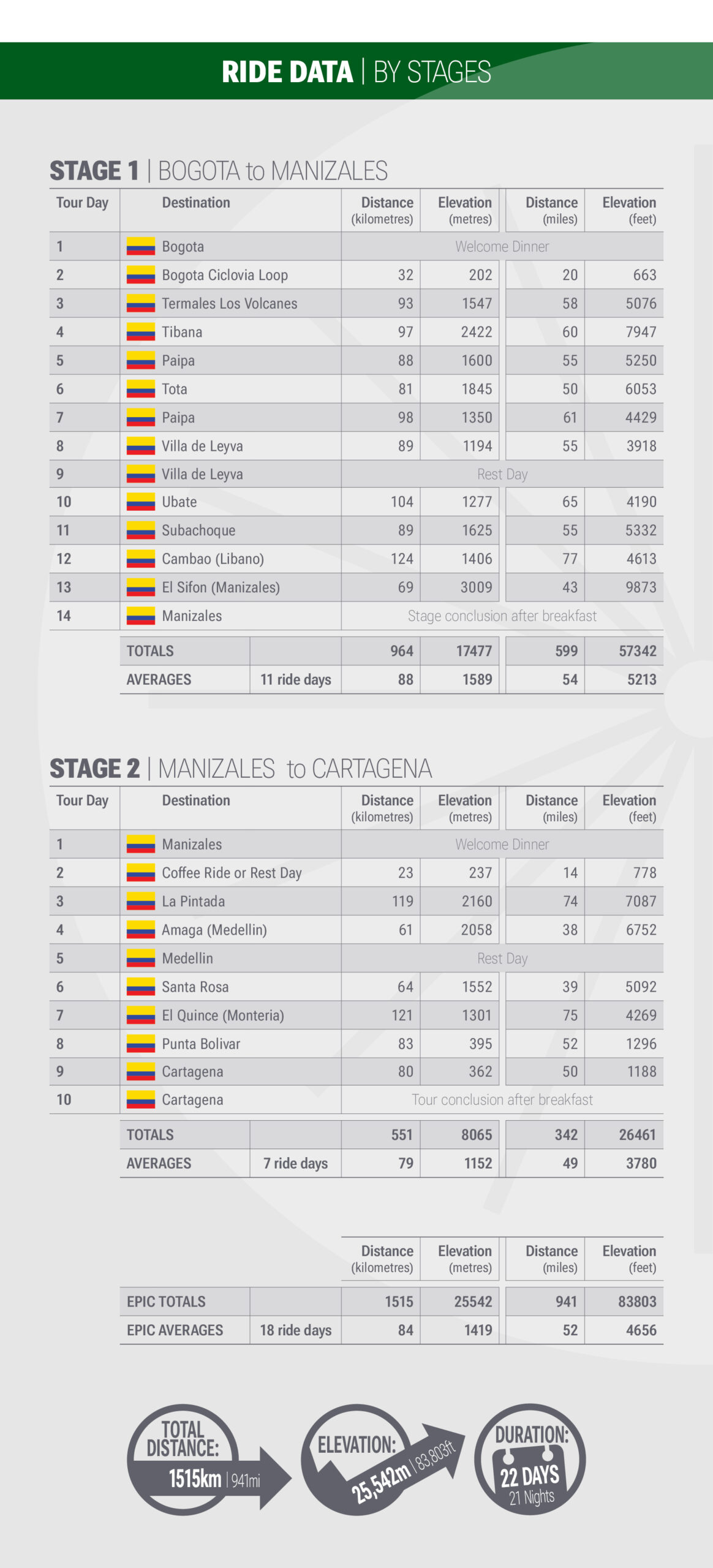

If you are looking for a good starting point, Americanos by John Chasteen is an excellent overview of Latin America’s independence movements. It places them within their global context and highlights the diverse paths nations took toward freedom. Clear, engaging, and well-balanced, it offers readers a solid understanding of the era’s key figures, events, and themes — a great starting point for anyone interested in Latin American history.
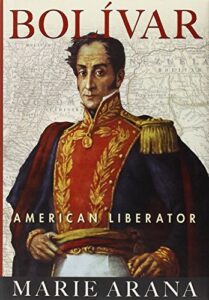
There are numerous books chronicling the life of Simón Bolívar, and, as is often the case with historical biographies, the level of subjectivity is broad. Bolívar: American Liberator by Marie Arana certainly adopts the heroic angle, but her book effectively utilises a wealth of primary sources to set the scene of the eponymous hero. Arana’s Bolívar vividly portrays early nineteenth-century South America and the forces that shaped Bolívar into a fearless general, brilliant strategist, and flawed yet visionary leader, offering both a gripping biography and a powerful reflection on South American identity.
Simón Bolívar – ‘The Liberator’ of Colombia
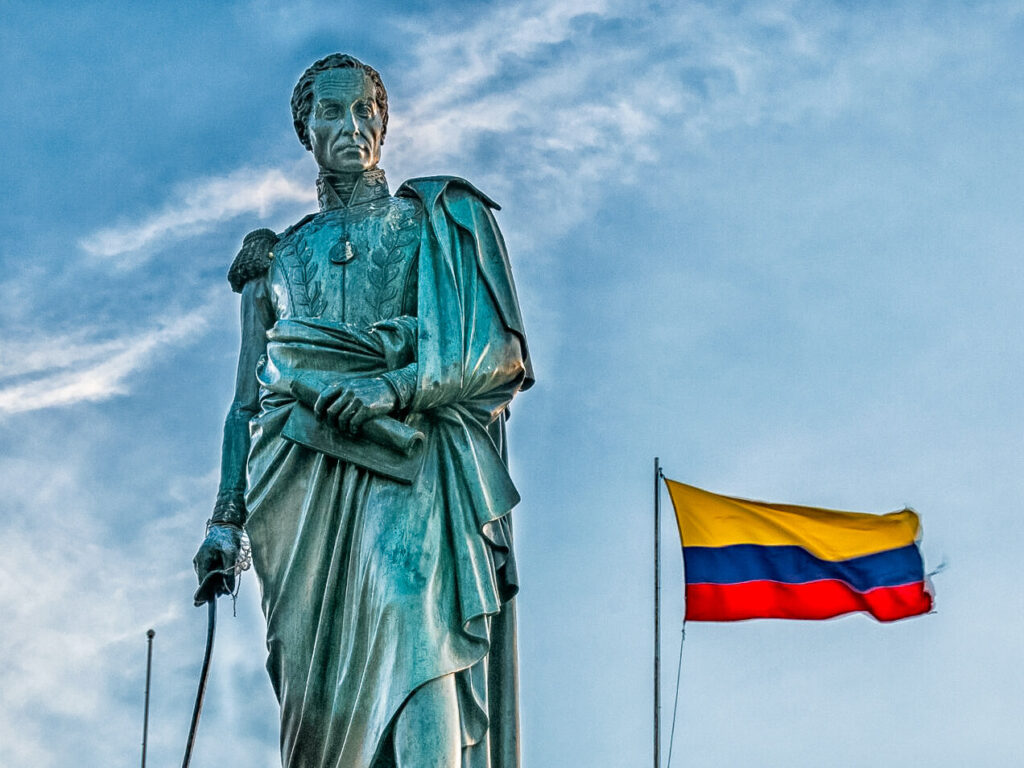
Simón José Antonio de la Santísima Trinidad Bolívar y Palacios was a Venezuelan military and political leader who led the countries, now known as, Colombia, Venezuela, Ecuador, Peru, Panama, and Bolivia, to independence from the Spanish Empire. He is known colloquially as ‘El Libertador’, or the Liberator of South America.
Born on July 24th, 1783, in Caracas, the capital of the Captaincy General of Venezuela, Simón Bolívar was the youngest son of one of the wealthiest families in South America. His father died when Simón was only two years old, and custody was passed on to his mother and her father. He was raised separately from his siblings and, as was custom at the time, was cared for by Hipólita, an African house slave.
In 1792, his mother died of tuberculosis, and the following year, his grandfather died. Custody of Simón was passed on to his uncle Carlos, whom Simón loathed, as he believed his uncle was only interested in the family inheritance.
Simón had a troubled upbringing and was described as being a difficult, unruly child. In June 1795, he ran away from his uncle to the home of his sister and her husband. They took him in and tried in vain to have his new residency officially recognised. Simón was instead ordered to live with Simón Rodríguez, who ran the school where Bolívar was educated. Rodríguez became a mentor to the young boy and was probably the main catalyst for Bolívar’s political leanings.
In 1797, Rodríguez was linked to a pro-independence conspiracy and was forced into exile. The teenage Bolívar was then enrolled in an honorary militia force. He was commissioned as an officer after a year. His uncles, Carlos, and Esteban Palacios y Blanco, decided to send young Bolívar to join the latter in Madrid. There, Esteban was friends with Queen Maria Luisa’s trusted advisor, Manuel Mallo. However, in February 1800, Mallo fell out of the Queen’s favour. Members of Mallo’s faction at court were arrested on pretence (including Esteban), and Bolívar was subsequently banished from court (for wearing diamonds without royal permission).
Around the same time, Bolívar fell in love with María Teresa Rodríguez del Toro y Alayza, and the two were engaged. They would have to wait several years to be together, as individual duties kept them apart. Bolívar and del Toro, aged 18 and 21 respectively, were married in Madrid on 26 May 1802. The couple then boarded the ship ‘San Ildefonso’ in A Coruña, on 15 June and sailed for La Guaira, (Venezuela) where they arrived on 12 July. They settled in Caracas. María fell ill and eventually died of yellow fever on 22 January 1803.
Bolívar was devastated by del Toro’s death and swore never to remarry.
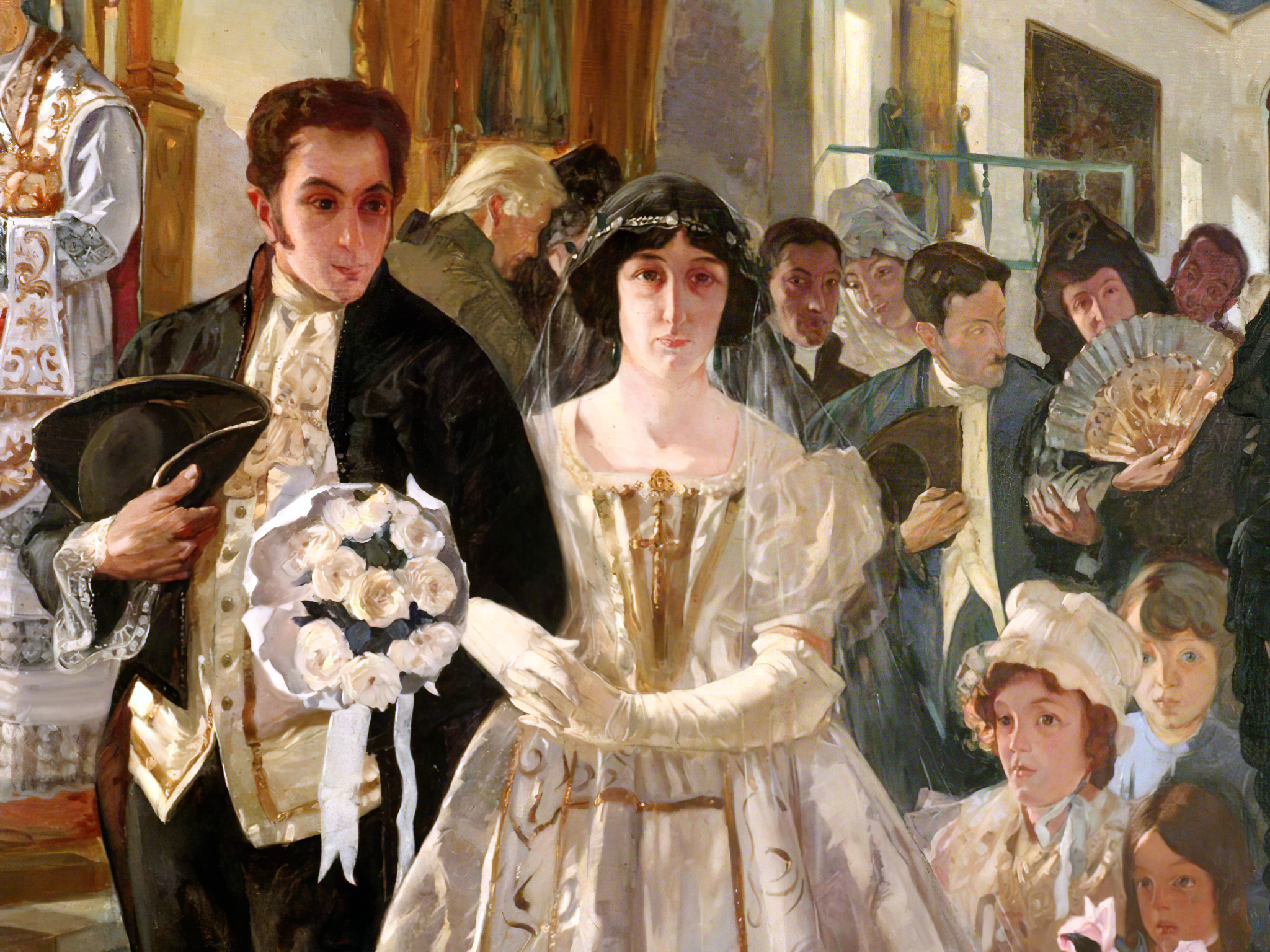
By July 1803 Bolívar had decided to leave Venezuela for Europe. He witnessed the coronation of Napoleon in 1804, but he was not sympathetic to French imperialism. After travelling with Simón Rodríguez through Italy, Bolívar had seen enough to declare his intent to see the Americas free from Spanish rule. He sailed back to Venezuela in 1807, where he began to meet with other creole elites to discuss independence from Spain. He discovered that he was far more radical than the rest of Caracas high society.
In 1807-08 Napoleon invaded the Spanish peninsula and gained decisive control. After much political manoeuvring in Venezuela, (and the dissolution of several governments), the country eventually came to be ruled by the ‘Supreme Junta of Caracas’, which rejected French rule, as well as the Spanish regency, (under the control of Napoleon’s brother, Joseph Bonaparte). The junta acquired Simón Bolívar’s services as a diplomat and Bolívar was sent to Britain to request their support in gaining Venezuelan independence. However, this bid failed and Britain could offer no concrete support, citing their Anglo-Spanish relations as being more important.
Bolivar returned to Venezuela in 1811, where the country was debating whether or not to declare independence. Bolívar helped to create the Patriotic Society, an organisation dedicated to gaining independence and he campaigned passionately. After a vigorous national debate, the Venezuela national assembly declared independence on the 5th of July 1811. Bolivar was overjoyed. To mark the occasion he freed all the slaves in his family and called for the end of slavery in the western hemisphere.
The declaration brought about a state of war between the Republicans and the Royalists in the new country. It was to be a prolonged and brutal war. Bolívar played a prominent role in the military at this time. Despite early Republican victories, the Royalists achieved victory. This was partly due to a huge earthquake that shook the country, specifically in Republican areas. The populace, on both sides, believed that the natural disaster was God’s retribution for Venezuela declaring independence. Republican forces finally capitulated and Bolívar fled. Aided by friends, he managed to escape Venezuela, across the border, into the ‘United Provinces of New Granada’, (Colombia).
In New Grenada, Bolívar wrote ‘The Cartagena Manifesto’ in which he called for renewed efforts for Venezuela to regain its independence from Spain.With high-ranking contacts, Bolívar secured a position as commander of a 70-man garrison in a small town. New Granada was an ally in the fight against Spain, and Bolívar managed to secure permission to launch an invasion of Venezuela in 1813. His army quickly swept through the country, and his forces captured Caracas within six months. He was able to enter Caracas on 6 August 1813 and was named ‘El Liberator’ and the Dictator of the Second Republic of Venezuela.
His initial success did not last, however. Many Venezuelans were nervous of the radical revolutionaries and preferred the stability of Spanish rule, (which they were accustomed to). Venezuela was not completely unified and was financially devastated. Many people of colour remained disenfranchised and refused to support the new government. Bolívar also had a powerful Republican rival in the east, Santiago Mariño, who was unwilling to subordinate himself. The newly installed dictator faced insurrections and war from multiple directions.
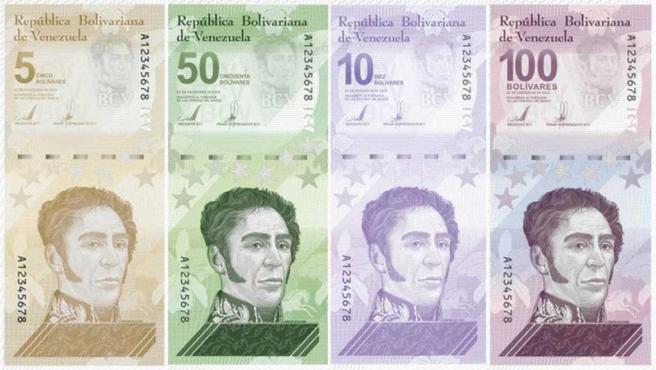
Spanish led forces succeeded in driving Bolivar out of Venezuela again and he fled to New Granada for a second time, where he was tasked with subduing the rebel territory of ‘The Free and Independent State of Cundinamarca’. The conflicts at this time were characterised not only by Republicans fighting against Royalists, but also by conflicting ideals of centralised and federalised governments. Cundinamarca supported centralism, while New Granada had a federal structure. This posed an ideological problem for Bolívar as he was a centralist. He captured the Cundinamarca capital of Bogotá, but made a truce with the Cundinamarcans, following which he resigned from his post in the New Granadan military and fled in exile to Jamaica.
Bolívar travelled to Haiti, after surviving an assassination attempt in Jamaica. In Haiti he met the country’s president, Alexandre Pétion and they became good friends. Pétion agreed to help Bolívar with financial aid and supplies, providing that Bolívar agreed to emancipate all enslaved people in Venezuela. Bolívar agreed and sailed back to Jamaica, where he met with Republican leaders to formulate a plan.
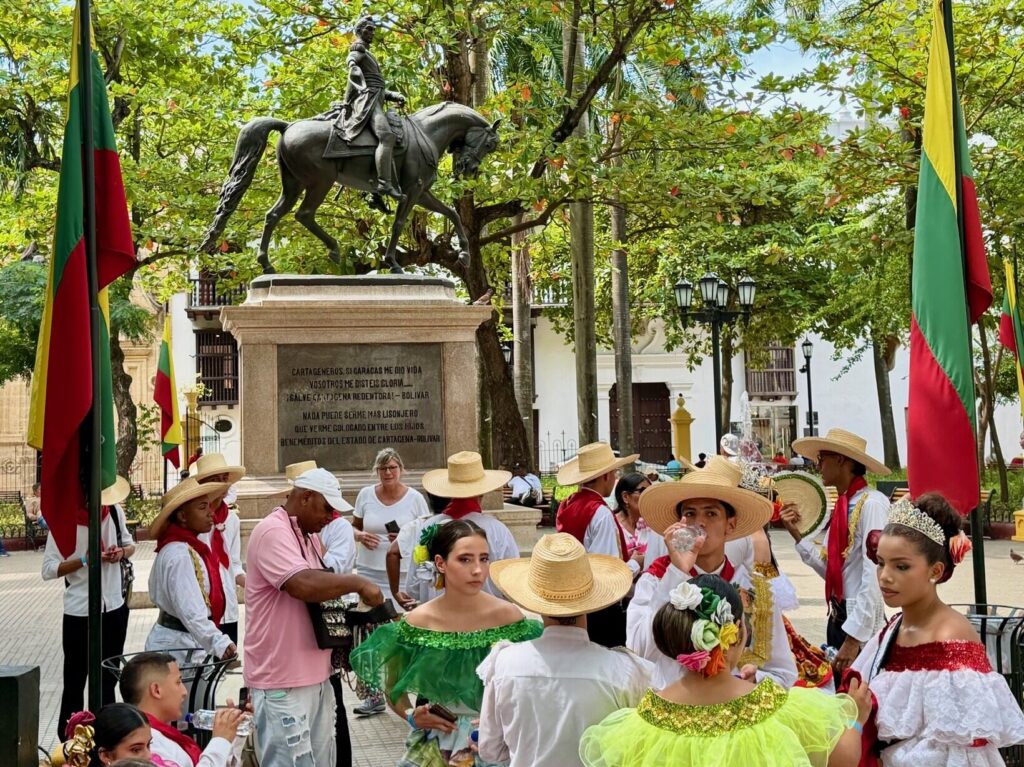
In a letter from Jamaica in 1815, Bolívar wrote: “A people that love freedom, will, in the end be free. We are a microcosm of the human race. We are a world apart, confined within two oceans, young in arts and sciences, but old as a human society. We are neither Indians, nor Europeans, yet we are a part of each.”
Supported by Pétion, Bolívar returned to Venezuela with an army in 1816 and won limited victories. However, his army was defeated and scattered. In July he was forced to return to Haiti. Other Republican troops in Venezuela fled into the jungle and waited for Bolívar’s return. Pétion again agreed to help his friend Simón and so Bolívar was able to return once again to Venezuela. Upon arrival, he issued a call for the new Third Republic to be created. The Republican military forces united under him, but there was much jostling for power. He was able to unite former Republican enemies and achieved a string of military successes against Royalist forces. Although Venezuela was not fully under Republican control, Bolívar was declared supreme leader of the Third Republic.
On the back of these more permanent military successes in Venezuela, Bolívar then decided to split his forces. Leaving his generals to complete the victory against the Royalists, he marched with 2000 soldiers into New Granada territories and met up with Republican allies across the border. Achieving a decisive victory at the Battle of Boyacá. Royalist forces then abandoned the capital of Bogotá, allowing the Republicans to capture the city treasury.
Bolívar designed a constitution for what historians now refer to as ‘Gran Colombia’. This was the beginning of independence in Colombia.
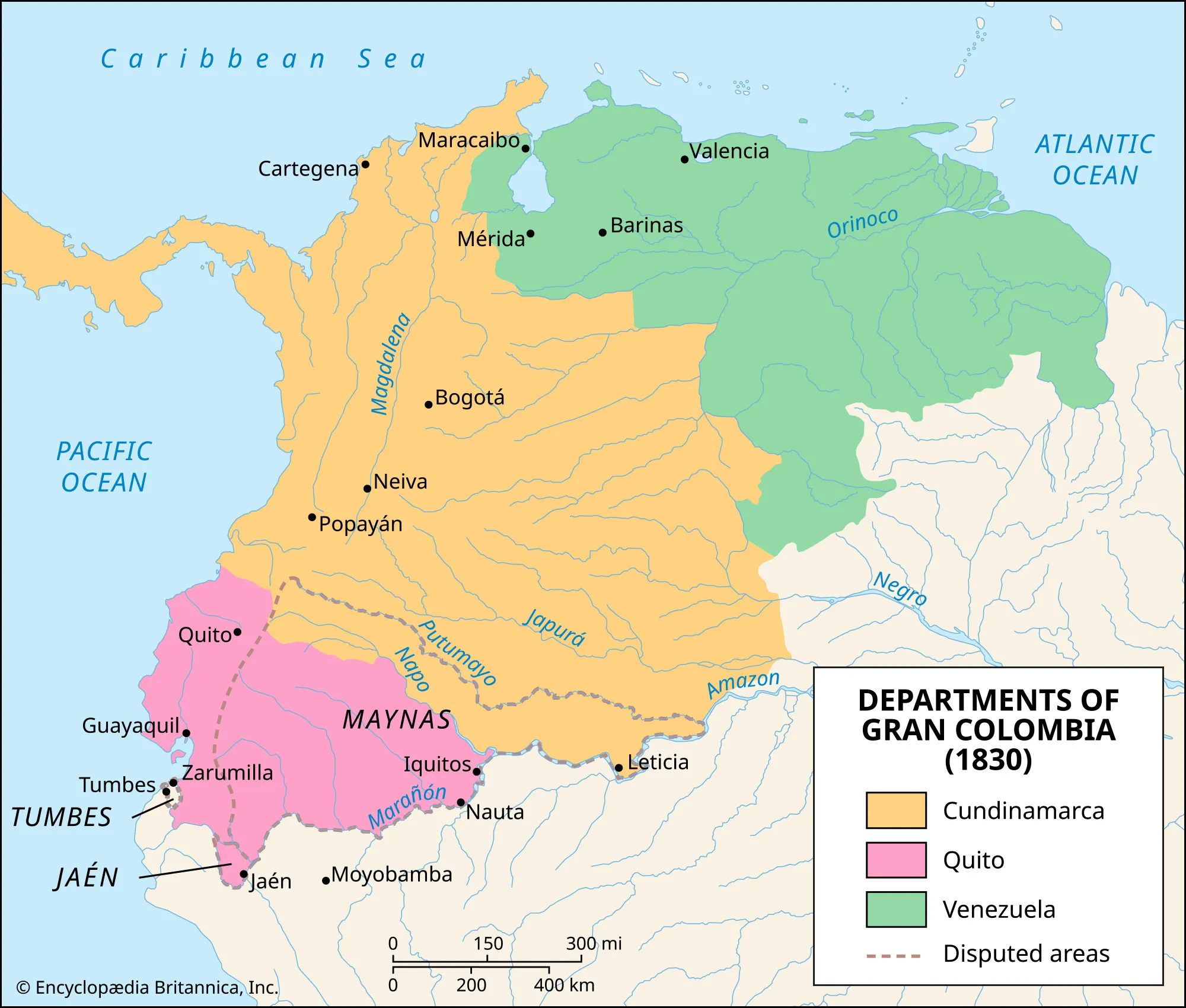
Next:
Overview
The Trip
Cycle Columbia from Bogota to Cartagena, exploring stunning scenery and the legacy of Simon Bolivar, El Libertador.
Email me the Tour Overview Book Now Schedule a CallTour at a Glance
The Epic – Bogota to Cartagena
Dates: November 7th – 28th 2026
Countries: Colombia
Number of days: 22 days
Number of stages: 2
Price: US$11,880
Grading:![]()
Stage 1 – Lakes, Legends & the High Andes
Dates: November 7th – 20th 2026
Countries: Colombia
Number of days: 14 days
Price: US$7,560
Grading:![]()
Stage 2 – Coffee Summits & Caribbean Shores
Dates: November 19th – 28th 2026
Countries: Colombia
Number of days: 10 days
Price: US$5,400
Grading:![]()
.
